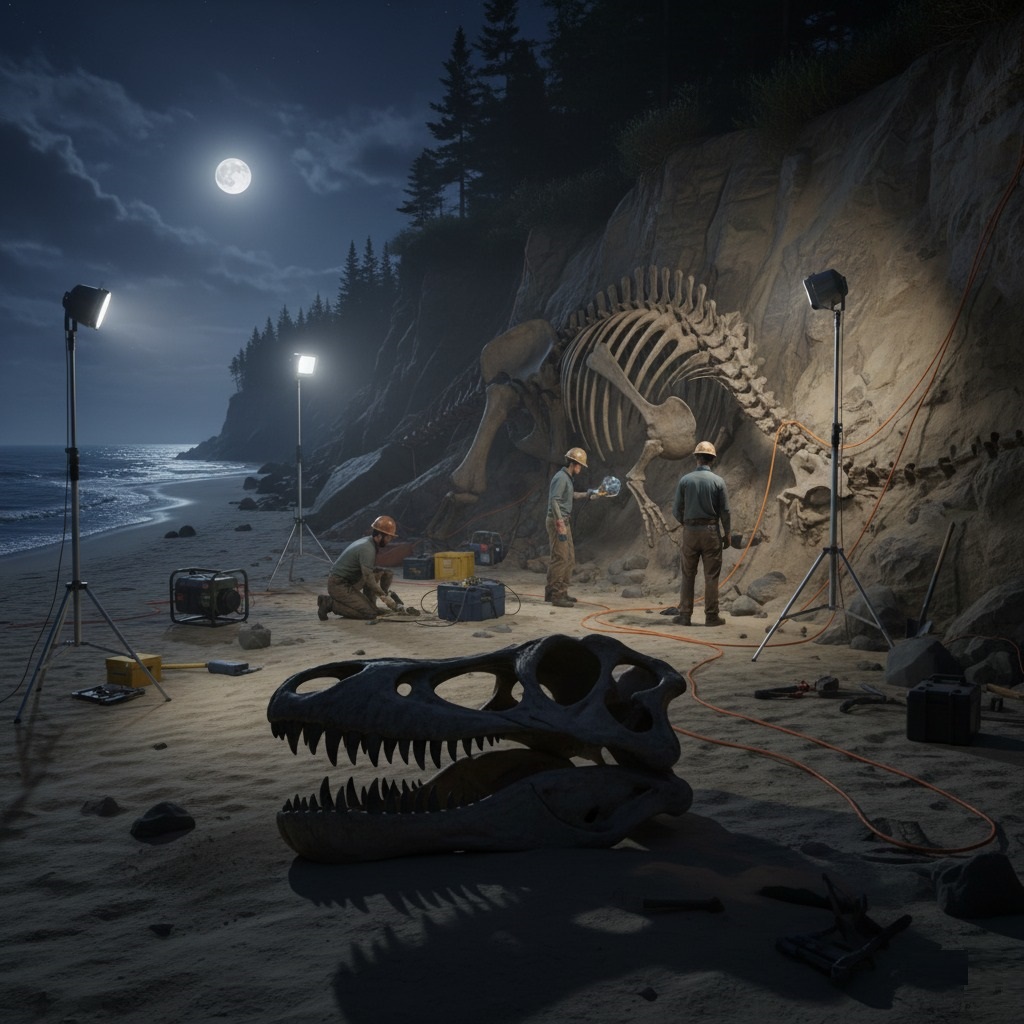Night Dig at La Brea: Unearthing Giants Along the California Coast

The California night was cool and unusually still, save for the rhythmic hush of waves against the shore near what locals affectionately called “La Brea’s Secret Cove,” a stretch of coastline not far from the famous tar pits, though far less frequented. Tonight, however, it was the epicenter of a different kind of ancient mystery. Dr. Aris Thorne wiped a bead of sweat from his brow, the beam of his headlamp cutting through the dust raised by the fine-tipped pneumatic chisel in his hand. Beside him, the colossal rib cage of a creature lost to time emerged from the sandstone cliff, starkly illuminated by the battery-powered floodlights humming around them.
It was 2042, and while much of the world had moved on to synthetic meats and interstellar tourism, Aris and his team remained tethered to the past, their lives dedicated to the echoes beneath their feet. This particular discovery, dubbed “Project Siren” by the team due to its proximity to the ocean and the haunting scale of the fossil, was proving to be one of the most significant finds in decades.
“Careful, Mateo! That’s perilumbar seven,” Aris called out, his voice hoarse from hours of concentration. Mateo, a nimble young paleontologist with a talent for micro-excavation, meticulously brushed away loose sediment from a vertebrae the size of a dinner plate.
The skull, detached but remarkably preserved, lay on a prepared sand bed in the immediate foreground, its massive eye sockets staring blankly at the moonlit Pacific. It was a Tyrannosaurus rex, not the swamp-dwelling variety often found further inland, but a coastal behemoth, its lineage suggesting a unique adaptation to the ancient California seaboard. Its teeth, long and serrated, seemed to grin menacingly even in death.
“Dr. Thorne, estimated completion for this section by dawn?” asked Elena, the team’s geological expert, as she adjusted a spotlight to better illuminate a particularly stubborn section of matrix.
Aris glanced at the eastern horizon, where a faint blush of purple was just beginning to appear. “If we push, Elena. We need to secure the pelvic girdle before the tide shifts too much. The last thing we need is an unexpected bath for our friend here.” He gestured towards the massive sacrum embedded in the rock.
The air was thick with the scent of sea salt and damp earth, punctuated by the metallic tang of their tools. Cables snaked across the sand, connecting portable generators to their delicate instruments and the array of powerful lights that transformed the beach into an alien landscape of stark contrasts. Every brushstroke, every careful chisel strike, was a communion with the deep past, a whisper across 66 million years.
As the moon dipped lower, casting longer shadows, Aris paused, leaning back to take in the grandeur of their find. The skeleton was almost entirely articulated, a rare sight for such a massive creature. It told a story not just of death, but of life – of a powerful predator that once stalked these very shores when California was a very different place.
The first rays of sunlight would soon banish the artificial glow of their lamps, revealing the familiar contours of the beach. But for these few precious hours under the stars, they were time travelers, meticulously piecing together the magnificent narrative of a giant that once ruled the ancient Californian coast, a silent sentinel unearthed from the sands of La Brea.
